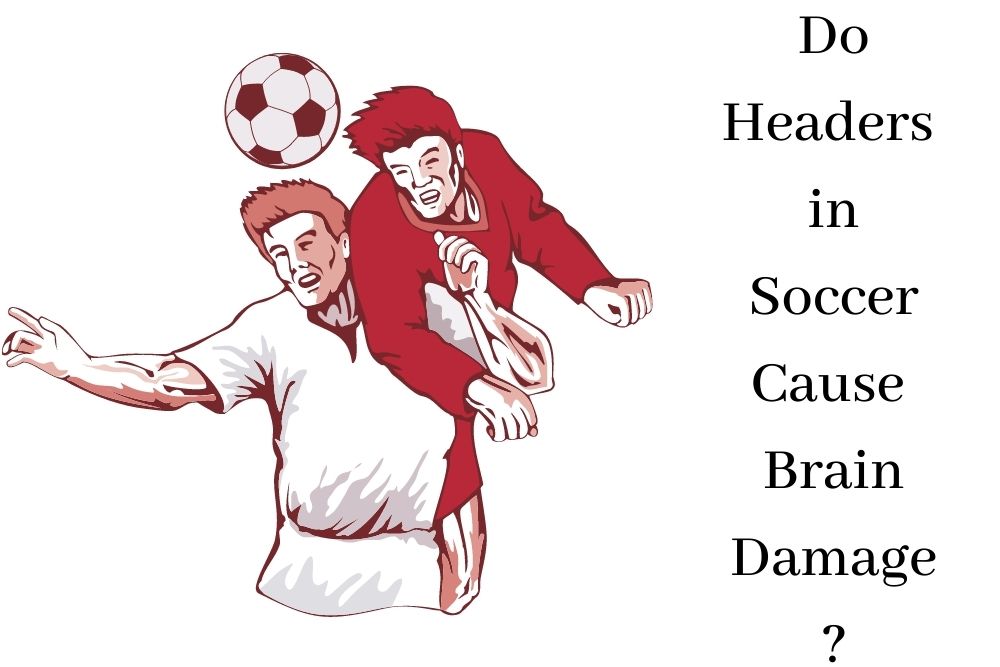One question that we get a lot from our readers is whether headers in soccer cause brain damage—and we absolutely understand their concerns. Every soccer player knows that one crazy injury can put an end to your career.
The use of the head in soccer has come a long way. It is one of the body parts that players can use in the game without attracting a foul.
From scoring sensational goals to blocking a clear goal-scoring opportunity, we have seen soccer players use their heads to make magic. In fact, defenders like Virgil van Dijk and Thiago Silva have scored most of their career goals using their heads.
Every outfield player must have gone through heading drills at one point or another in their career. However, it is unlikely that a goalie will have heading drills.
Rarely will you see goalies head the ball—except when they are outside the 18-yard box. When the ball hits the goalie on the head, it is usually an accident as they try to block off the ball.
While the use of the head is an important skill in soccer, we will look at the possible long-term negative effect this practice may cause. Our topmost concern would be whether heading the ball can cause brain damage.
Concerned that your kid is heading the ball? Keep reading to find out more.
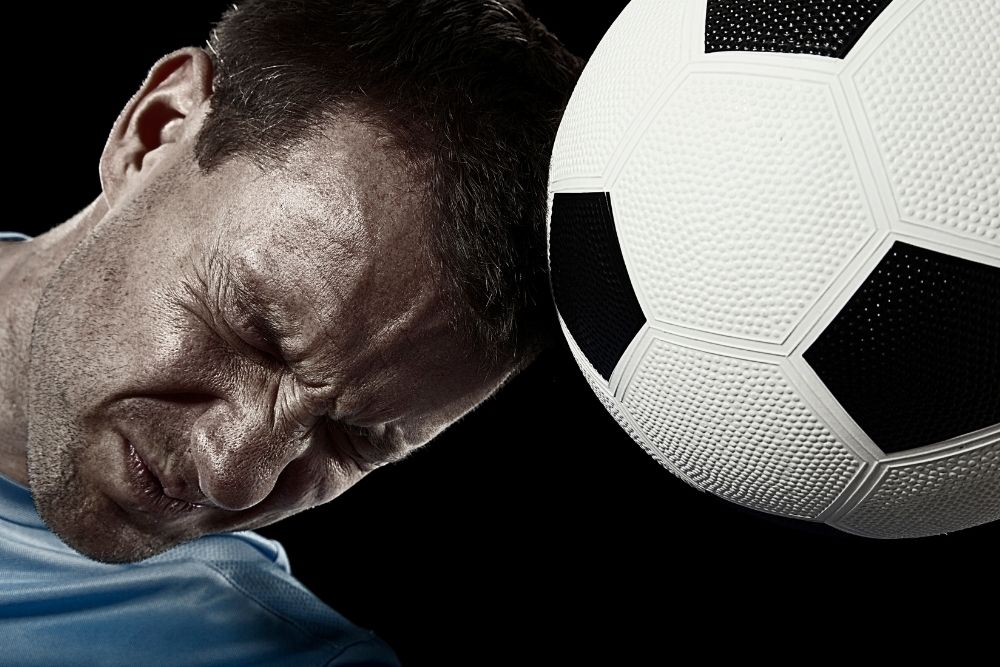
Quick Navigation
Do headers in soccer cause brain damage?
It is estimated that there are over 265 million professional and amateur soccer players around the globe. Also, in a competitive game, most players head the ball 6 to 12 times on average.
Every caring parent will likely feel unease when their teenage son or daughter starts using their head in soccer. Well, there are specific moments in soccer that necessitate the use of the head.
One example is when a player whips a shot from a corner kick or when a player decides to throw a long ball into the 18-yard box after winning a throw-in. In both scenarios, you will see the defenders and strikers jumping sky-high to be the first to either head the ball away or head it into the net.
Since soccer has a wide age entry and exit, you will find children as young as 10 and adults as old as 40 playing the game. For example, Japanese soccer player Kazuyoshi Miura is one of the oldest professional soccer players in history.
Born in 1969, Miura left Yokohama FC after their relegation to join Suzuki Point Getters on loan at the end of the 2021 season. Likewise, Lucas Knecht holds the record of being the youngest soccer player to play in a senior international soccer match.
To answer the question, yes! Headers in soccer can cause brain damage. However, there are other factors that determine how easily you will get brain injury by heading the ball.
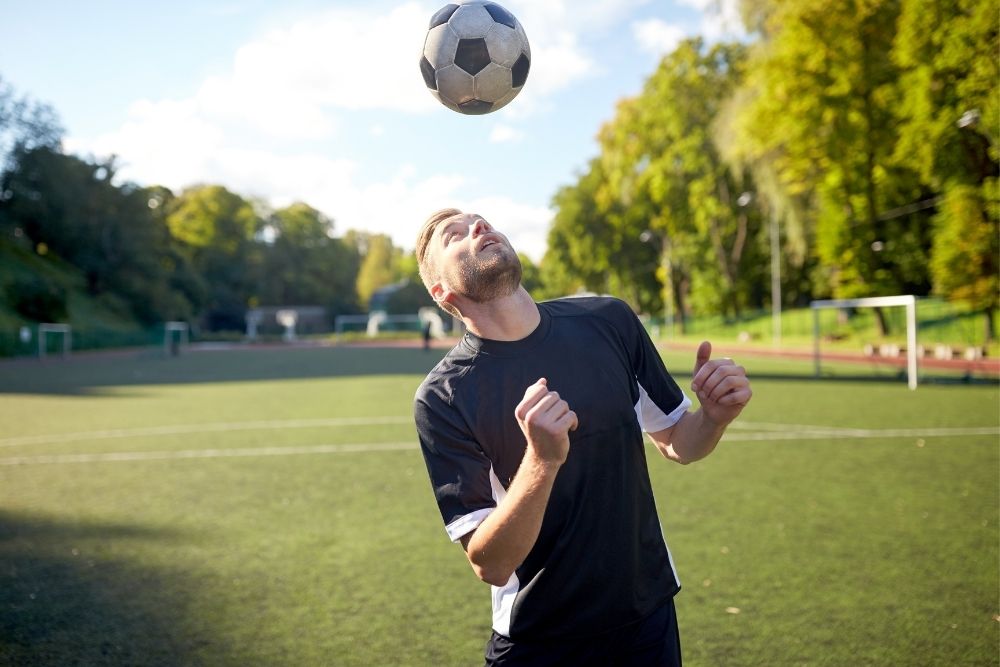
The speed of the ball
Although we mentioned that soccer players sometimes have headings incorporated in their drills, the intensity of the ball during drills is nothing close to what soccer players are exposed to during a soccer game.
The speed of the ball is usually harder during the game. Studies show that there is a 22% chance of having a concussion when you head a fast-moving ball.
Soccer player like Ronny Heberson was recorded to have shot the ball at the speed of 210 km/h. A ball traveling at this speed can break your wrist or cause a concussion when you try to use your head to block the shot.
A concussion is a form of traumatic brain injury that may cause a soccer player to lose consciousness. Other important symptoms of concussion include headache, amnesia, blurry vision, and difficulty maintaining balance.
A larger number of soccer players that head a fast-moving ball will likely experience a subconcussive head injury. This form of concussion is milder and may not present obvious symptoms like a concussion.
What this means is that most soccer players may never know that they have experienced a subconcussive head injury. Whether you experience a concussion or subconcussive injury, over time a repetitive head trauma may lead to severe brain damage.
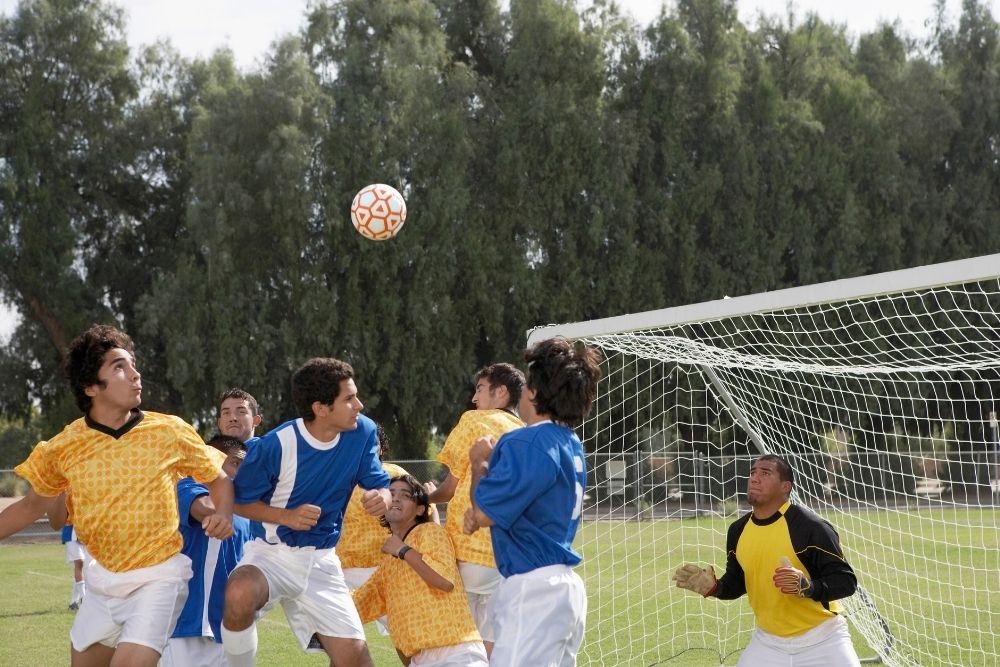
The age of the player
As we mentioned earlier, we have seen soccer players as young as 14 years play in big tournaments with far older players. Unfortunately, older soccer players will not tune down their shot power when playing with younger players. The intensity will remain the same.
Due to the higher risk of head injury among younger soccer players, the United States and other countries have put a cap on the age when soccer players will be allowed to use their heads in soccer.
In 2016, the use of head by soccer players below the age of 10 was banned by the United States Soccer Federation (USSF). The U.S. Soccer mandate also issued guidelines on how many times younger soccer players should head the ball in a week.
In 2020, the United Kingdom and the Scottish Football Association joined a list of countries that have put an age limit on the use of heads in soccer.
Younger children have skulls that are not yet fully formed. Therefore, taking a hit from a fast-moving ball is likely to cause more serious brain injuries to children and teenagers than adults.
Another reason why heading is discouraged among children under 11 years is that there is a high chance of head collision when two kids jump for the ball. This happens frequently in high-profile games and one of the players sometimes ends up with a cut on the head.

Nature of the ball
When we talk about the nature of the ball, we are talking about the weight, pressure, and size. As you already know, soccer has so many variations including indoor soccer, street soccer, futsal, beach soccer, with association football being the most popular.
These different soccer variations have different specifications for their balls—and some are harder than others. You will find the different specifications for soccer balls in the different variants here.
Some soccer variations usually have 5 different ball sizes for different age groups. In association football, the size 1 is usually smaller and has a smaller psi of less than 6. This is the size recommended for kids and toddlers.
Size 5 is used for professional games and is usually the biggest. Their pressure is somewhere between 8.5 to 15.6 psi. Futsal balls are judged the hardest among all the soccer variants.
The implication is that your chance of getting a concussion is higher if you head futsal balls compared to when you head beach soccer balls, even if both of them are traveling at the same speed.
The harder the ball, the more damage it will likely cause upon impact. It is important to mention here that the pressure of the ball will affect its weight. If you want to know how to check ball pressure, see this article.
A study by Purdue University engineers suggests inflating balls to the minimum requirement by FIFA and NCAA rather than aiming for the higher pressure. According to the study, this can reduce the potential for head injury by 20%.
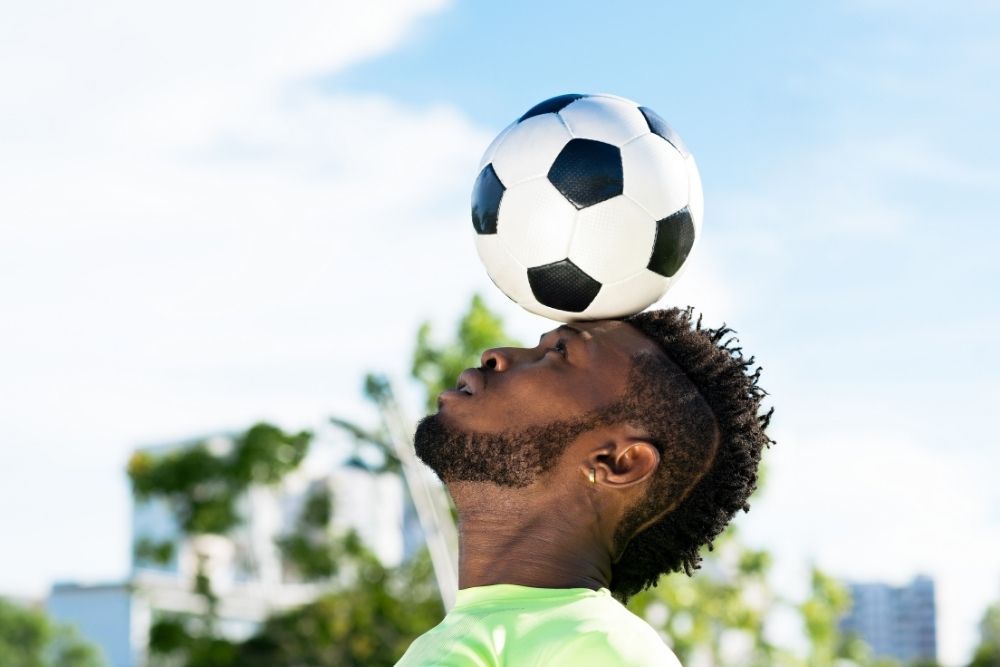
Can you lose brain cells from heading a soccer ball?
Several studies over the years have tried to see if there is a link between loss of brain cells and headers in soccer and you will be surprised there are. A 2016 study showed that routine headers can lead to brain damage.
Five years prior to that, Michael J. Gertner reported that more brain damage was found among soccer players that headed ball after a DTI brain scan. Amateur players that completed 1,500 headers a year suffered more brain nerve cells damage.
While all soccer players that use their heads in soccer are prone to brain damage, a study found that the risk is five times more among women than men.
According to Michael Lipton, an Albert Einstein College of Medicine neuroscientist, women who headed the ball more experienced structural deterioration in 8 of their brain’s signal-carrying white matter regions.
Another harrying finding of the research was that female headers experienced damage in an average of about 2,100 cubic millimeters of their brain tissue. This is far less than the 400 cubic millimeters experienced in male soccer players.
The most significant change in brain anatomy among soccer players is the thinning of the cortex. The thinning of the cortex is linked with slower cognition.
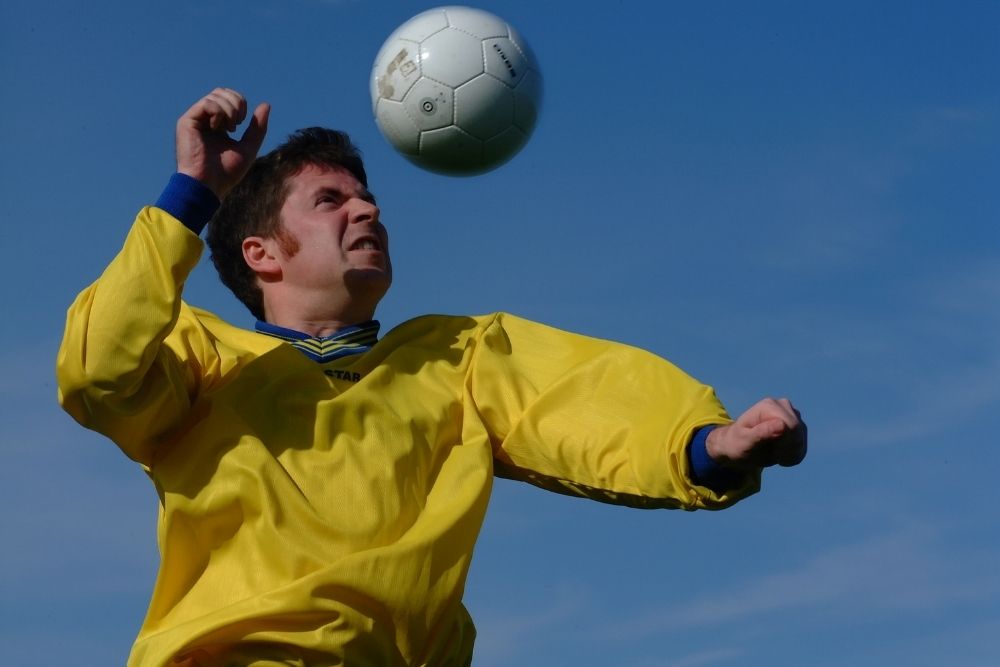
How to safely head the ball in soccer?
Removing heading from the game will eliminate an important element of the game. It will also likely have a cascading effect that will affect all other parts of the game.
A law that eliminates heading will likely modify corner kicks too because the vast majority of corner kicks are floated into the 18-yard box by the kicker.
Thankfully, there are ways soccer players can head the ball while minimizing the potential for brain damage. One of the ways is by wearing a soccer helmet. Petre Cech is one of the soccer players that started wearing a helmet after a traumatic blow to the head.
Product Link: Surlim Soft Helmet Flag Soft Shell Helmet
It is also important to work with coaches that will drill you on the proper way to head a ball. Here is a detailed article on how to head a soccer ball without it hurting.
Conclusion
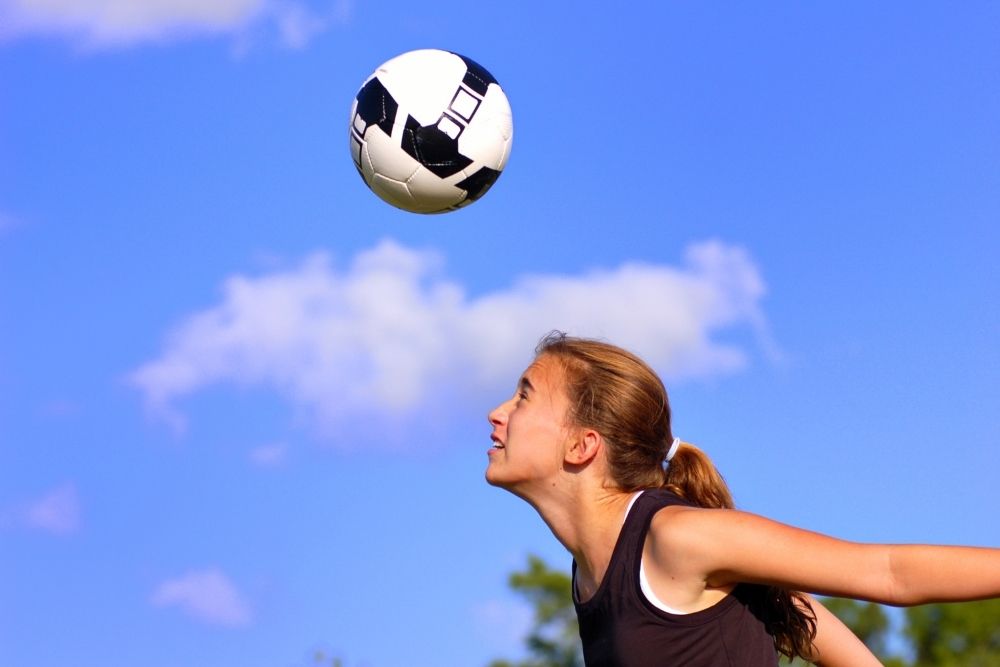
It is possible that a lot of soccer players have had concussions without even knowing. This is because the majority of the cases are mild and will not present any symptoms.
However, as a soccer player, you should always see the doctor when you experience symptoms like migraine, persistent dizziness, changes in your vision, and unconsciousness that lasts longer than 30 seconds.
Yes, headers in soccer can increase your chances of having brain injuries especially when you play against the rules.
In addition to headers, avoid any instances that will lead to head collisions with other players or use your head on balls that are at a height lower than your waist because another player may kick you on the head in the process.
If you experience any of the symptoms associated with a concussion after heading the ball, it is important to see a doctor immediately for proper examination. If you head the ball often, we would recommend using a soccer helmet to protect your head.
It may feel uncomfortable at first but will certainly get better with prolonged use. Whatever guarantees your safety and doesn’t cause harm to other soccer players will likely not be objected to by the match officials.
Hi there, I’m Jay.
Soccer is everything in my life! My friends and I have created this blog with all our enthusiasm, passion, and understanding after years of playing pro soccer. Hope you will enjoy it!
